Loquat: Grow & Care for Eriobotrya japonica
Written by Iris
Oct 13 2021
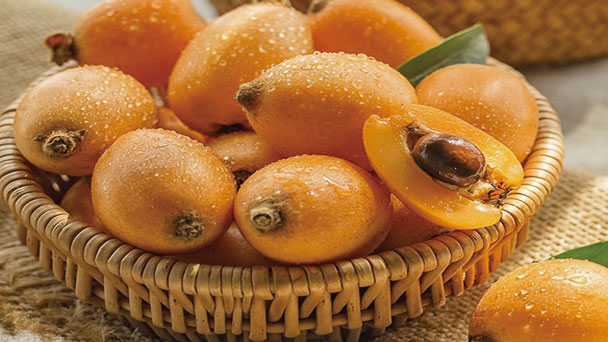
Loquat is a high-yielding evergreen tree whose small round yellow fruit has an exotic aroma. Loquat can be eaten fresh or used to make puddings and preserves. Loquat has slight cold tolerance, but it is more effective if it is grown in areas with warm winters. In colder parts of the country, they can be grown in containers and protected from severe frosts in winter. Loquat are self-pollinating - meaning they can pollinate without needing another plant.
Loquats can be grown in containers such as half barrels. This means you can put them in your sunniest spot – say on a deck or terrace - if your veg garden doesn’t happen to be big on suntraps.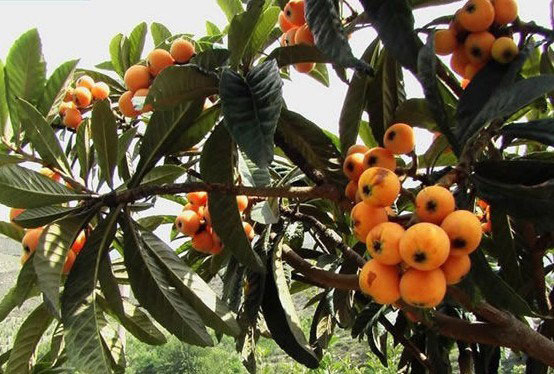
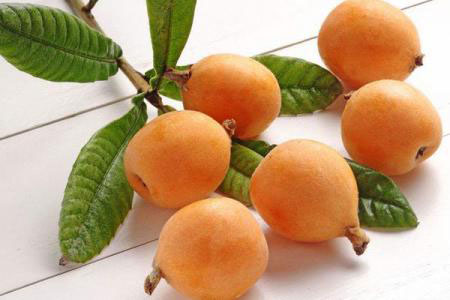
Often, loquats are grown as a shade cover for patios, and they can be shaped into espalier patterns. If placed in the right location, you may be able to get a little shade on your japanese plum during the hottest portions of summer, which can be beneficial to the tree’s growth.
It is possible to grow loquats in containers. These will remain small and compact, and can be placed outdoors when the weather is optimal and moved inside under a bright grow light when the temperatures are too cold.
season arrives, reduce or stop watering. Once loquat trees are 4 or more years old, water them during the fruit development period and during prolonged dry periods. Overwatering may cause trees to decline or be unthrifty.
One note to remember is that the tree does not fruit in temperatures lower than 28 degrees Fahrenheit, though there are some cultivars that bend that rule.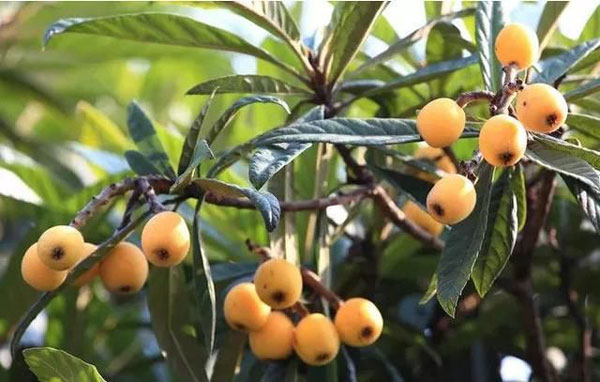
harvest easier.
Fruit Thinning. To improve fruit size, you may wish to hand-thin flowers or fruit. Allow anywhere from 4 to 10 fruits to develop per terminal. Thinning will increase fruit size from 25%–100%. In areas with insects and or bird fruit pests, bag the fruit clusters. Bagging also hastens fruit development and reduces fruit scaring.
The two insects that cause the majority of problems with loquat trees are black scale and fruit flies. Aphids can also be an issue during the growing season, but they're not as significant a problem as the black scale. You can use neem oil to keep both of these pests away from your tree.
Fruit fly larvae can cause severe problems with your tree if you don’t identify and remove them in time. The maggots bore into the fruit, causing it to rot and fall from your tree. If you do get a fruit fly infestation, make sure you clean up any fallen fruit each day to reduce the larva’s ability to emerge as flies from the fruit.
Another pest to watch out for is the codling moth. This caterpillar might also try to infest your tree. The only way to keep it away from the fruit is to use an insecticide or an exclusion bag. An exclusion bag wraps around the fruit, preventing fruit flies and caterpillars from accessing the bounty.
Spraying bacillus thurigiensis onto the plants will also keep pests at bay as well.
Birds and deer can also prevent problems for your loquat, as both of them enjoy feasting on the fruit.
The loquat tree is at risk of developing diseases such as fire blight and pear blight. In regions where there is plenty of rain in the early summer and high humidity levels, you might have to watch out for the onset of fire blight.
Bees transfer the blight to the trees, killing the leaves while turning young shoots brown. Pear blight is similar, but it only occurs in California.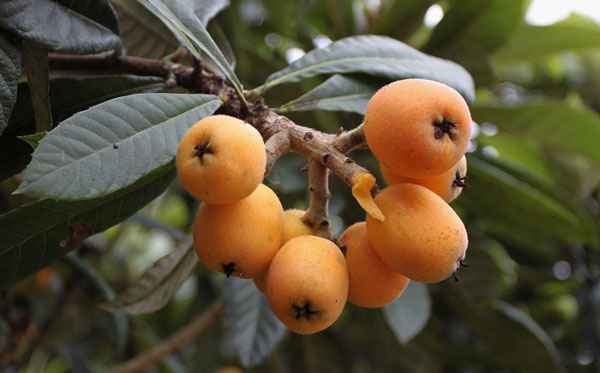
It's easiest to harvest by trimming off the branch tip which the fruit is attached, taking down entire clumps of fruit all at once. Try to pick clumps where most of the fruit appears to be ripe to avoid waste. Slightly under-ripe fruit is still edible, but may be a bit less sweet and juicy. Overripe fruit is soft and mushy, and tends to be excessively sweet.
Happily, whole fruit can be popped onto a cookie sheet in the freezer and frozen until solid, and then stored in a freezer bag until ready for use. When thawed, it will be soft and a bit mushy, but makes for an excellent syrup or jam material.
You can also preserve your loquats by making jams, jellies, and syrups. As it’s low-acid, you may need to add additional acid for proper canning purposes.
The fruit reputedly also tastes good when pickled, and it’s also suitable to make wines and liqueurs. It can be used in secondary fermentation for beer as a flavoring.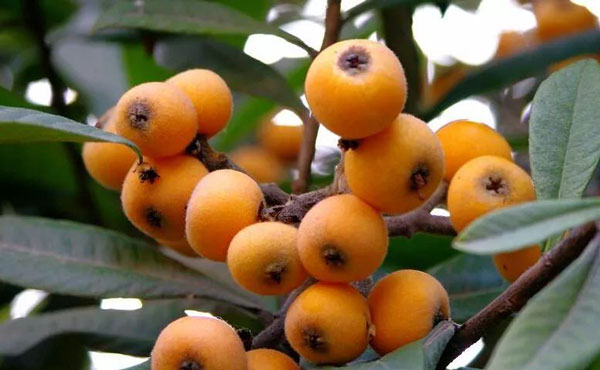
Loquat Big Jim. Round to oblong fruit that is 1 ½ inch in diameter. It has pale orange-yellow skin that is easy to peel. Its orange-yellow flesh has a very good slightly tart flavor. It ripens in mid-spring.
Loquat Mrs. Cooksey. A large fruit of about 1 ½ inch in diameter with a yellow flesh and excellent flavor.
Gold Nugget. A large, rounded oblong fruit with yellow-orange thin skin. This type’s orange flesh is juicy, firm, and sweet and its flavor is similar to an apricot.
Loquat Advance. A medium to large pear-shaped fruit with deep yellow thick skin and white flesh. It ripens later in winter to early spring. Its tree is a dwarf of about 5 feet tall and resistant to fire blight.
Loquat Herd's Mammoth. Large fruit with yellow-orange skin and white-cream-colored flesh. It ripens earlier than other types.
Loquat Vista White. A small to medium-sized fruit with yellow skin and white flesh. It is very sweet and superb for dessert.
Where to Grow LoquatHow to Grow Loquat (Eriobotrya japonica)Grow Loquat from Stem CuttingsGrow Loquat from Air LayeringHow to Care for Loquat (Eriobotrya japonica)Loquat Lighting RequirementsLoquat Soil CareLoquat WateringLoquat Temperature & HumidityLoquat FertilizerLoquat PruningLoquat Pests & Diseases CareLoquat HarvestingLoquat StoringVarieties of Loquat (Eriobotrya japonica)Orange Fleshed CultivarsWhite Fleshed Cultivars
Where to Grow Loquat
Plant loquats in full sun – though they will tolerate some partial afternoon shade. Trees can reach a height of 6 metres and a similar spread. They tend to drop a lot of fruit and this can make a mess of any plantings beneath them.Loquats can be grown in containers such as half barrels. This means you can put them in your sunniest spot – say on a deck or terrace - if your veg garden doesn’t happen to be big on suntraps.

How to Grow Loquat (Eriobotrya japonica)
Grow Loquat from Stem Cuttings
It's difficult to propagate a loquat with a stem cutting but you can certainly try. Take a 6" long cutting from a healthy stem tip, strip the lower leaves, dip the cut end in rooting hormone and place it in a container of moistened potting soil. Place the container in a shaded area in the garden and water regularly. If the cutting develops roots you'll see new growth at the tip of the cutting. At that time you can plant your loquat in the ground.Grow Loquat from Air Layering
You can propagate a loquat through a process called air layering. Air layering is a fun way to grow roots on the tree's stem while it is still attached to the tree. The mother plant provides water while the shoot is developing roots so survival is often higher than with rooting cuttings. Here's how to air layer a Loquat: Remove a few leaves between 8" and 12" from the shoot tip, leaving a 4" to 6" stem section exposed. Scrape the bark from a one inch section of the stem all the way around. Applying a small amount of rooting powder on the cut area with a small paint brush or cotton swab speeds up the rooting. Pre-soak with water two hands full of sphagnum moss then gently squeeze to remove dripping water. Hold a sheet of plastic wrap in your hand and place the clump of wet sphagnum moss on top. Press a crease in it and fold it around the cut part of the stem. Hold the plastic tightly and secure the bottom edge to the stem with a wire twist tie. Carefully fold the edges of the plastic together to form a good seal in the moist moss. (This wrapping process is easier if an extra set of hands is available.) The plastic holds the moss against the cut stem and provides a moist place for roots to grow while it is still attached to the original mother plant. Many experienced propagators also cover the plastic with foil to prevent sunlight from damaging tender new roots. Birds are also sometimes known to peck at the worm like roots. Watch for the roots grow inside the plastic. After a month or so, when the roots fill the moss, cut the shoot below the rooted area so the new cutting has roots. Don't cut above the roots or the new plant will lack roots. This rooted cutting can be grown out in a pot for a period of time before it is planted in the yard. Whichever method you choose, good luck with your project.
How to Care for Loquat (Eriobotrya japonica)
Loquat Lighting Requirements
This tree should be grown in a full sun to part shade environment, and does best in zones 8-10. This means that much of California is perfect for growing these tangy-sweet small fruits, as well as much of the south or southeastern part of the United States.Often, loquats are grown as a shade cover for patios, and they can be shaped into espalier patterns. If placed in the right location, you may be able to get a little shade on your japanese plum during the hottest portions of summer, which can be beneficial to the tree’s growth.
It is possible to grow loquats in containers. These will remain small and compact, and can be placed outdoors when the weather is optimal and moved inside under a bright grow light when the temperatures are too cold.
Loquat Soil Care
Most soils, except those that are alkaline, are suitable for loquats. Good growing conditions produce the best fruit and tree growth. Poor soil and a low water supply reduce tree growth; the tree usually produces fruit with good color and flavor, but with a large seed and little flesh.Loquat Watering
Newly planted loquat trees should be watered at planting and every other day for the first week or so and then 1 to 2 times a week for the first couple of months. For the first 3 years, water once a week during prolonged dry periods (e.g., 5 or more days of little to no rainfall). Once the rainyseason arrives, reduce or stop watering. Once loquat trees are 4 or more years old, water them during the fruit development period and during prolonged dry periods. Overwatering may cause trees to decline or be unthrifty.
Loquat Temperature & Humidity
The recommended zones for loquat trees are USDA 8 to 10, but it is known for its winter hardiness and late flowering blooms. It is not uncommon to see photographs of the tree in bloom with snow-covered flowers.One note to remember is that the tree does not fruit in temperatures lower than 28 degrees Fahrenheit, though there are some cultivars that bend that rule.

Loquat Fertilizer
Do not put fertilizer in the hole before you plant the tree. For a young tree, apply a shovelful of manure in the fall, plus a tablespoonful of nitrogenous fertilizer scattered around the tree every month or two. Fertilize mature trees once a year in early spring. Use a nitrogenous fertilizer, such as ammonium sulfate or calcium nitrate, at the rate of 1 pound per inch of trunk diameter, spread evenly over the irrigated area.Loquat Pruning
Tree Size Control. During the first 1 to 2 years after planting, prune young trees by tipping shoots in excess of 2 to 3 ft, tipping will increase branching. Trees may be trained to a modified central leader or open center configuration. Mature trees may be selectively pruned to maintain trees at 6 to 12 ft in height. This will make care of the tree andharvest easier.
Fruit Thinning. To improve fruit size, you may wish to hand-thin flowers or fruit. Allow anywhere from 4 to 10 fruits to develop per terminal. Thinning will increase fruit size from 25%–100%. In areas with insects and or bird fruit pests, bag the fruit clusters. Bagging also hastens fruit development and reduces fruit scaring.
Loquat Pests & Diseases Care
Loquat trees don't have to deal with many pests or diseases. However, you need to be on the lookout for the following.The two insects that cause the majority of problems with loquat trees are black scale and fruit flies. Aphids can also be an issue during the growing season, but they're not as significant a problem as the black scale. You can use neem oil to keep both of these pests away from your tree.
Fruit fly larvae can cause severe problems with your tree if you don’t identify and remove them in time. The maggots bore into the fruit, causing it to rot and fall from your tree. If you do get a fruit fly infestation, make sure you clean up any fallen fruit each day to reduce the larva’s ability to emerge as flies from the fruit.
Another pest to watch out for is the codling moth. This caterpillar might also try to infest your tree. The only way to keep it away from the fruit is to use an insecticide or an exclusion bag. An exclusion bag wraps around the fruit, preventing fruit flies and caterpillars from accessing the bounty.
Spraying bacillus thurigiensis onto the plants will also keep pests at bay as well.
Birds and deer can also prevent problems for your loquat, as both of them enjoy feasting on the fruit.
The loquat tree is at risk of developing diseases such as fire blight and pear blight. In regions where there is plenty of rain in the early summer and high humidity levels, you might have to watch out for the onset of fire blight.
Bees transfer the blight to the trees, killing the leaves while turning young shoots brown. Pear blight is similar, but it only occurs in California.

Loquat Harvesting
Ripe loquats tend to be slightly larger than unripe ones, and will give slightly when gently pressed. Their skin will be a bit darker than unripe ones, which gives you an indication of when to start checking. If left too long on the tree, they will fall off on their own but will be overripe.It's easiest to harvest by trimming off the branch tip which the fruit is attached, taking down entire clumps of fruit all at once. Try to pick clumps where most of the fruit appears to be ripe to avoid waste. Slightly under-ripe fruit is still edible, but may be a bit less sweet and juicy. Overripe fruit is soft and mushy, and tends to be excessively sweet.
Loquat Storing
While loquats are delicious and well worth growing, they all seem to come ripe at once. And while they’re wonderful for fresh eating, they only last for a few days once they’re ready. There is a definite “eat me now” period for fresh-eating purposes, after which they’re no longer suitable.Happily, whole fruit can be popped onto a cookie sheet in the freezer and frozen until solid, and then stored in a freezer bag until ready for use. When thawed, it will be soft and a bit mushy, but makes for an excellent syrup or jam material.
You can also preserve your loquats by making jams, jellies, and syrups. As it’s low-acid, you may need to add additional acid for proper canning purposes.
The fruit reputedly also tastes good when pickled, and it’s also suitable to make wines and liqueurs. It can be used in secondary fermentation for beer as a flavoring.

Varieties of Loquat (Eriobotrya japonica)
Orange Fleshed Cultivars
Loquat Early Red. Medium-large, pear-shaped fruits that form in small clusters. They are ore orange-fleshed with an orange-red skin with white dots. This type ripens in winter.Loquat Big Jim. Round to oblong fruit that is 1 ½ inch in diameter. It has pale orange-yellow skin that is easy to peel. Its orange-yellow flesh has a very good slightly tart flavor. It ripens in mid-spring.
Loquat Mrs. Cooksey. A large fruit of about 1 ½ inch in diameter with a yellow flesh and excellent flavor.
Gold Nugget. A large, rounded oblong fruit with yellow-orange thin skin. This type’s orange flesh is juicy, firm, and sweet and its flavor is similar to an apricot.
White Fleshed Cultivars
Loquat Champagne. Medium to large oval fruit with deep yellow skin and white flesh. It melts with sweetness and is very juicy and has a good flavor. This type ripens late spring.Loquat Advance. A medium to large pear-shaped fruit with deep yellow thick skin and white flesh. It ripens later in winter to early spring. Its tree is a dwarf of about 5 feet tall and resistant to fire blight.
Loquat Herd's Mammoth. Large fruit with yellow-orange skin and white-cream-colored flesh. It ripens earlier than other types.
Loquat Vista White. A small to medium-sized fruit with yellow skin and white flesh. It is very sweet and superb for dessert.
Latest Updated
- Benefits of Bugleweed - 7 Science-backed Health Benefits
- Bugleweed Dangers & Side Effects - Is It Poisonous?
- How to Plant Evergreen Trees - What You Should Know
- When to Plant Evergreens - Grow Guide for Evergreen Trees
- 12 Wonderful Evergreen Shrubs for Your Garden
- 12 Popular Evergreen Plants with Pictures for Beginners
- When And How To Prune A Lilac Bush Like a Pro
- How to Grow & Care for Lilac Vine (Hardenbergia Violacea)
- Japanese Lilac Tree (Syringa Reticulata) Care & Propagation Guide
- Shumard Oak Pros and Cons - What to Know
Popular Articles
- Winter maintenance of Antirrhinum Majus
- How to Grow Terminalia Mantaly Tree
- How to Grow and Care for Crossostephium Chinense
- How to grow Antirrhinum Majus in spring
- Peristeria Elata (Dove Orchid) Profile: Info & Care Guide
- Underwatered Snake Plant (Sansevieria Trifasciata) - Signs And How To Fix
- How to Care for Brazilian Jasmine Plant (Mandevilla Sanderi)
- How to Grow & Care for Graptopetalum Purple Delight in Summer
- Rosa Chinensis (China Rose): Plant Growing & Care Tips
- How to Care for Baby Sun Rose (Aptenia Cordifolia)